Treatment of a single dark tooth with vital bleaching
How to treat the discoloration of a single tooth. Predictable cosmetic treatment without any biological cost.
When it comes to treatment of the single discoloured tooth, guidelines suggest that there should be a logical order of treatment options to achieve a satisfactory cosmetic outcome, beginning with the least invasive. This is known as progressive smile design. Vital tooth whitening is a popular and a non-invasive technique of treating single discoloured teeth.
In the modern day where aesthetics is highly sort for, tooth whitening has become a very popular option to correct discolouration.
The reader should understand the causes of single tooth discolouration and the management of the treatment for it.
Causes of discolouration of single teeth
The most common causes of discolouration of a single tooth tends to be because of local causes of intrinsic discolouration. Trauma to teeth may lead to intrapulpal haemorrhaging which leads to blood components flowing into dentinal tubules. Initially this will appear as a pink discolouration however with time, if pulp canal obliteration (PCO), also known as calcific metamorphosis, or necrosis occurs, this colour darkens leading to a yellowish then a grey-black shade. PCO is defined by the deposition of secondary and tertiary dentine within the root canal space (1). The extent of the discolouration is directly associated to the duration of time that the pulp has been obliterated or necrotic.(2)
Clinical and radiographic assessment of a discoloured tooth
After a smile analysis, there are a few techniques that are currently used in order to clinically assess the colour and stain of a tooth which can be divided into subjective (visual) and objective (instrumental) assessments.
Subjectively, the most common method is visual shade matching with the comparison to a commercial shade guide. Although this technique is simple and quick to use, the limitations of this method need to be appreciated. Factors such as age, lighting, experience and eye fatigue can result in variations in results from assessors. Instrumental methods of assessment include the use of colourimeters, reflectance spectrophotometers and digital image analysis but even these have their disadvantages such as cost and the intrusive nature of equipment.(3)
Sensibility tests should be carried out and the most reliable method is electric pulp testing. The high specificity of this test means that it is more likely to identify vital teeth correctly in comparison to cold pulp testing. It is important to use a control of a contralateral tooth when doing sensibility testing to allow the patient to compare the sensation of a known vital tooth with the tooth that is being tested.
If the clinician suspects that the discolouration is due to PCO or necrosis then a periapical radiograph is essential. However, in the case of pulp necrosis there may be an absence of any radiographical change. Data shows that only about 7-27% of teeth with PCO will progress into pulp necrosis with periapical disease showing on a radiograph.(1) Figure 1 and 2 shows the appearance of a patient that has suffered trauma in her teens.
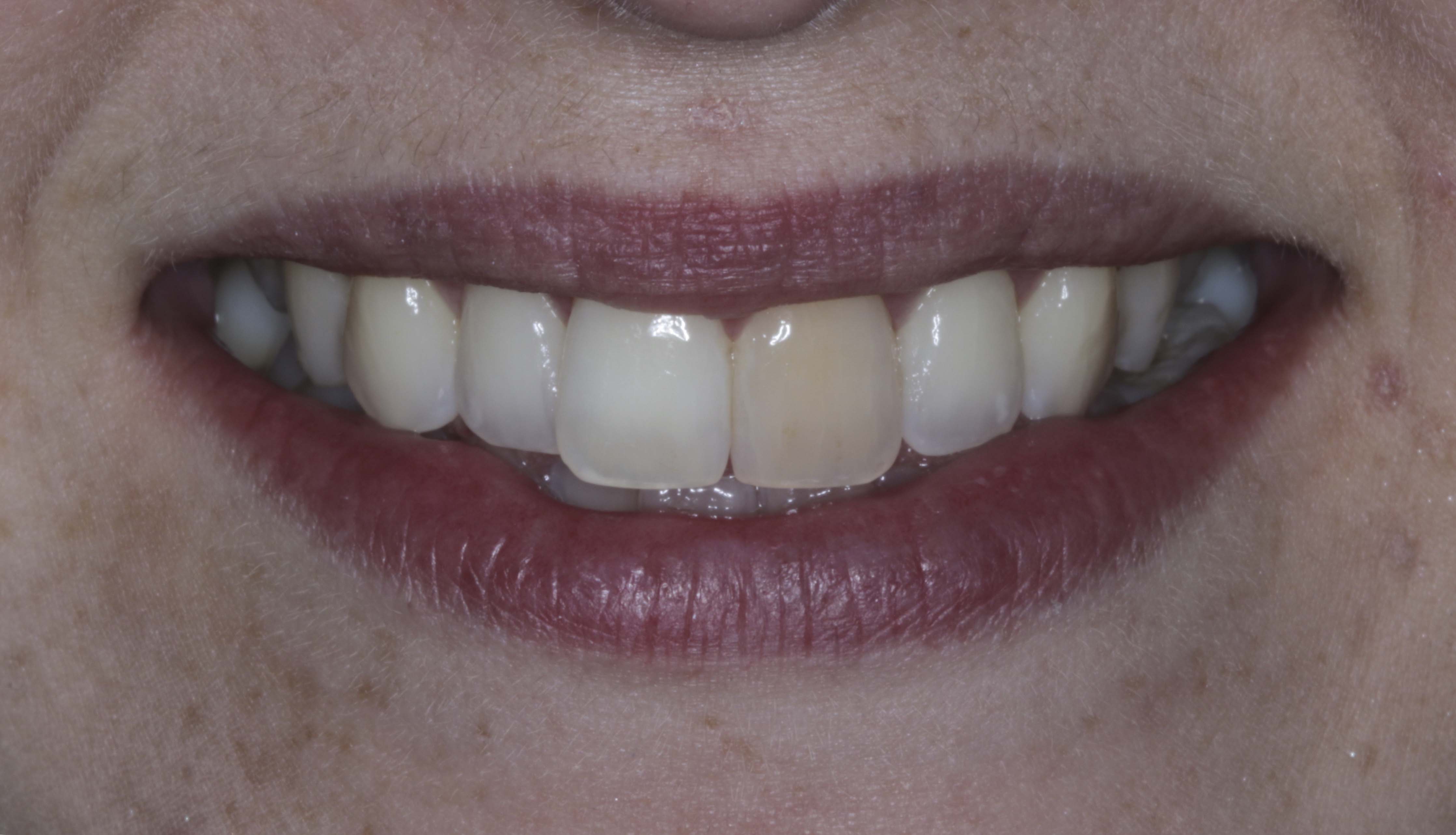
Figure 1. Patient presenting with a dark single central upper left central incisor due to trauma. We can see how this would be of aesthetic concern, especially for a young patient.
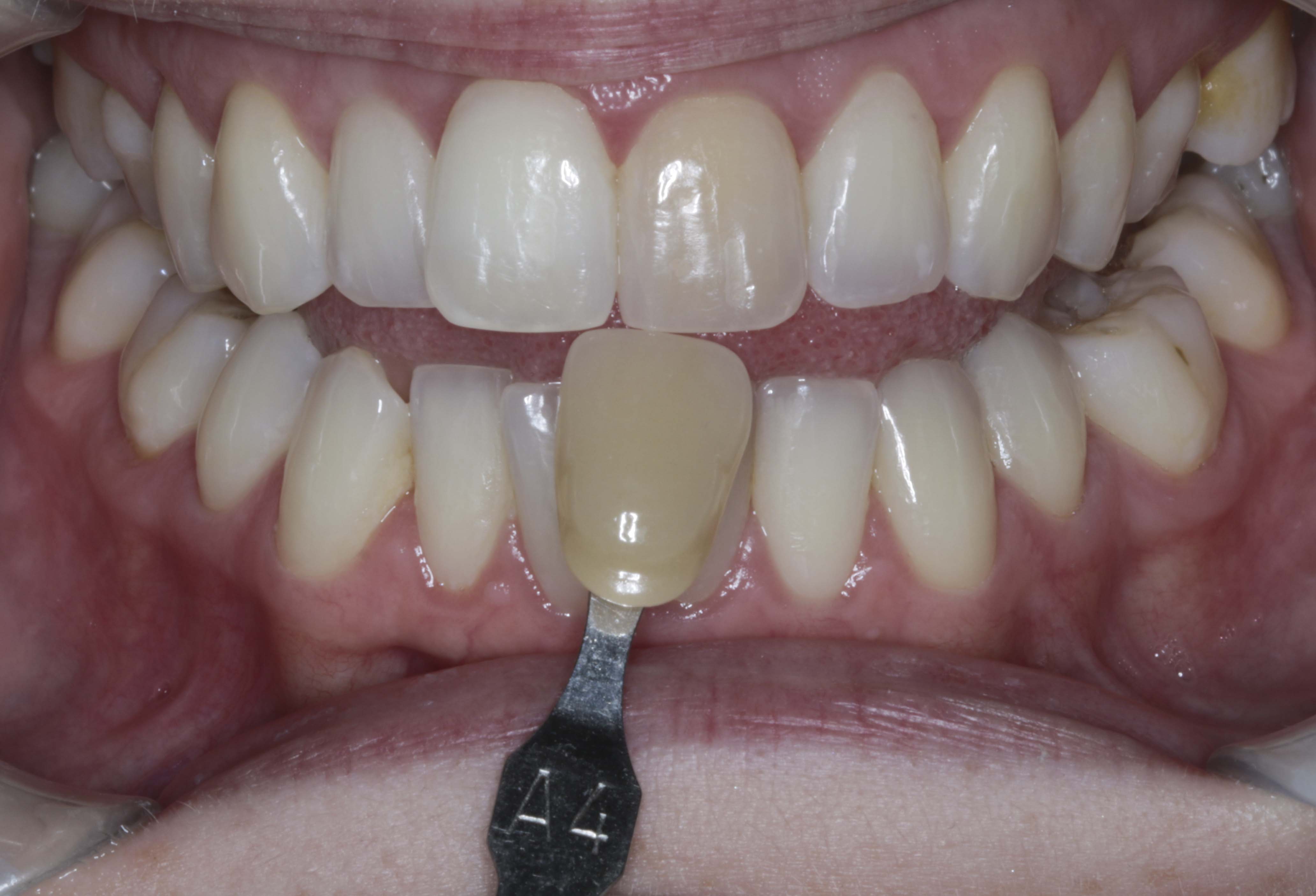
Figure 2. Retracted view demonstrating the pre-operative VITA shade for the single tooth.
Consent
Other than in certain ethical situations, tooth whitening is only permitted for 18 year olds or older. The consent procedure with this treatment needs to be very robust as patients need to be very aware of the possible outcomes and risks associated as expectations must be managed. They must be told that the result cannot be guaranteed, the time taken to complete the treatment can be variable and that relapses can occur.
Treatment options
When it comes to treatment of the single discoloured tooth, guidelines suggest that there should be a logical order of treatment options to achieve a satisfactory cosmetic outcome, beginning with the least invasive. This is known as progressive smile design.
Pink discolouration sometimes found after trauma is still reversible and therefore monitoring and review may be the only requirement. Scaling and polishing is also a good initial step to take so that any extrinsic stains can be removed and the true colour of the tooth can be assessed.
Vital tooth whitening is a popular and a non-invasive technique of treating single discoloured teeth.(2) However, if the whitening does not prove to be effective, minimally invasive composite veneers can aid in masking residual darkness of the tooth, or more invasive procedures such as ceramic veneers or full coverage crowns can be placed.
Clinical techniques
There are a few techniques that can be done when whitening single dark teeth. The method I use most frequently is where the discoloured tooth is bleached first and then the rest of the arch.
Impression taking
The teeth are dried thoroughly with a 3 in 1 tip and impressions are taken using perforated metal trays with Hydrogum 5 alginate from Zhermack®. Assistance from the dental nurse is required during this stage to hold cheek retractors to allow easy insertion of the loaded tray. Impressions should be examined for presence of all the teeth and for any air blows or drags.
Laboratory prescription
The lab prescription should request for super-sealing, scalloped, silicone upper and lower whitening trays with palatal and labial reservoirs on the discoloured tooth. Both canines in the arch should also have buccal and labial reservoirs as these teeth generally are darker than the rest of the arch. Figure 3 shows the custom super-sealing whitening trays produced by the laboratory. Whilst waiting for the whitening trays, the patient should take home Tooth Serum to use which reduces the risk of sensitivity with this procedure.
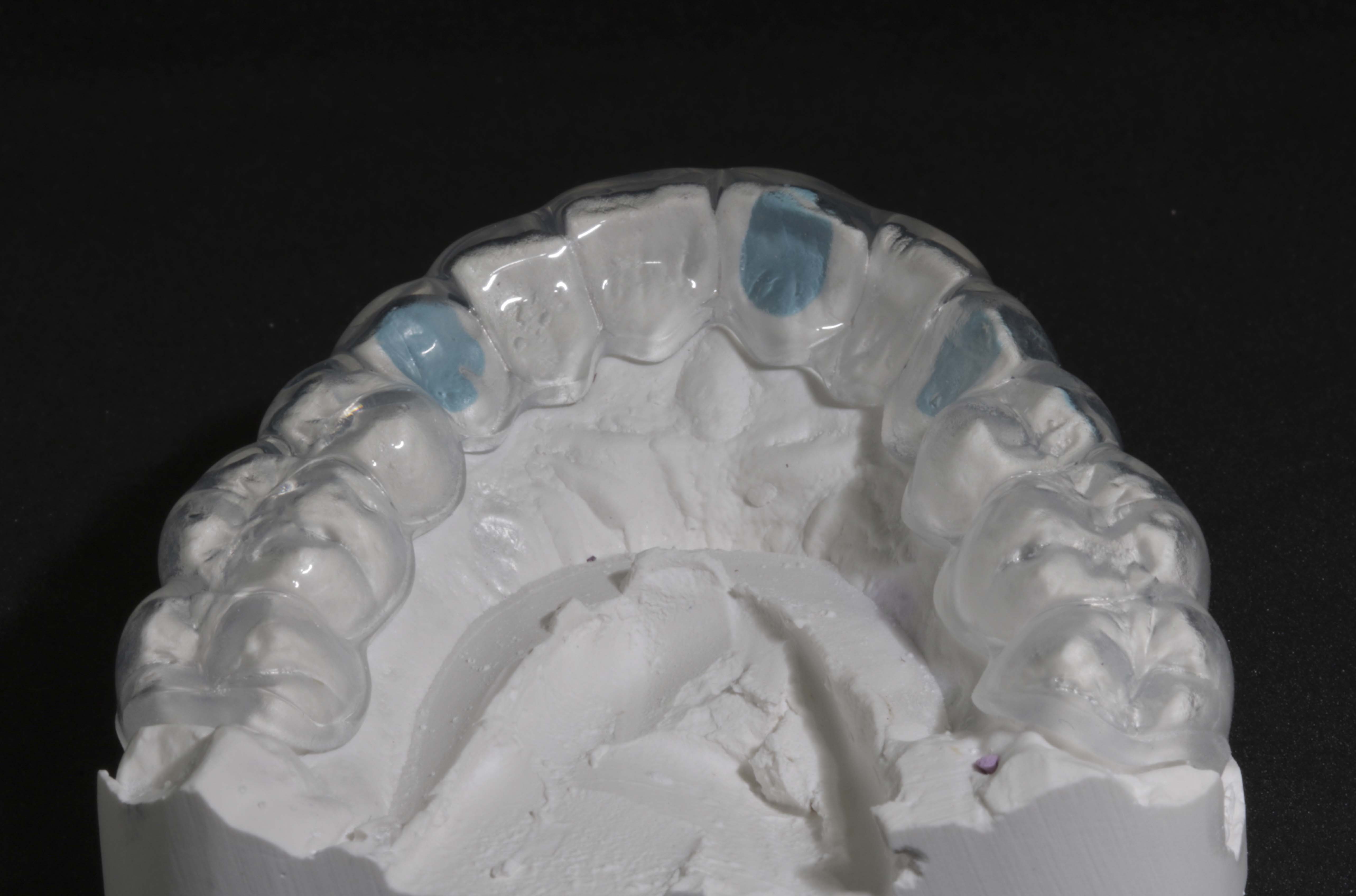
Figure 3. Picture of the palatal reservoirs on individual teeth with recommended bleaching tray.
Fitting the trays
Once the trays have arrived, accuracy of fit and the seal at the cervical margin is checked. Ensure there is no bubbling in this area which would suggest a leaking margin. The patient should be shown how to remove and insert the trays.
Patient compliance and instructions
The patient should use 10% carbamide peroxide (CP) gel nightly for one – four weeks on the discoloured tooth. A reassessment with the dentist should be planned of the tooth colour. If the single discoloured tooth still requires further whitening then the patient can continue to do so but if not, the rest of the buccal surfaces of the arch can be bleached at the same concentration. Another reassessment should take place where the patient can be given a 16% CP gel to use for another 2 weeks on the trays.
Finally, a last reassessment to determine the outcome of the treatment is scheduled. Post-operative instructions are given for maintenance as there is some risk that the newly whitened teeth may rebound and become discoloured again therefore a top up regime should be established for around every 6 months but for some patients this can reach up to 3 years(4). Figures 4 and 5 shows the same patient after treatment with Enlighten Tooth Whitening. Figures 6 and 7 compare the before and after treatment photographs and there has been a dramatic improvement of the shade of the single dark tooth. We can see here how this can greatly improve the confidence our patient whilst avoiding more invasive treatments such as veneers.
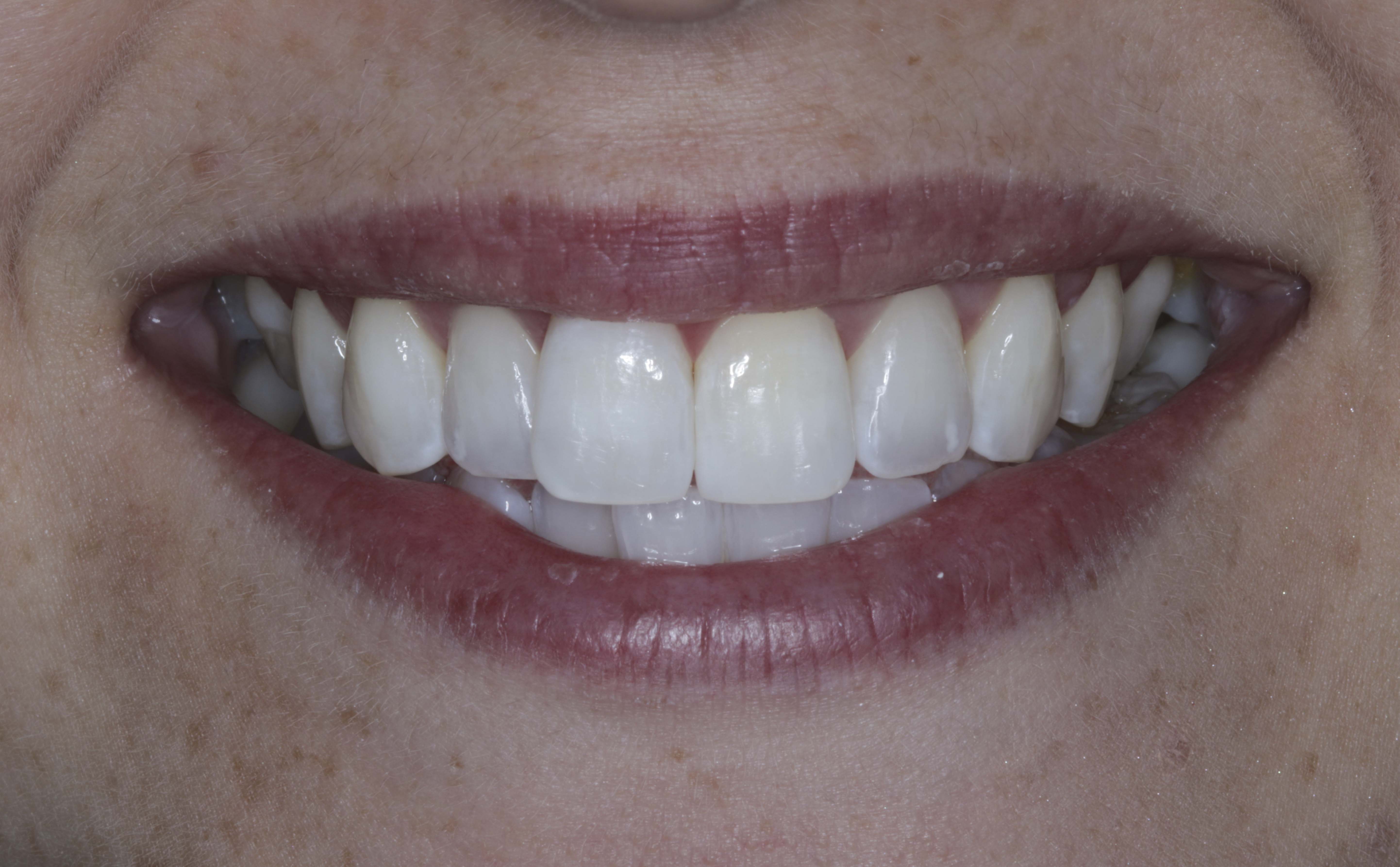
Figure 4. Picture showing the post-operative result after 6 weeks of vital bleaching.
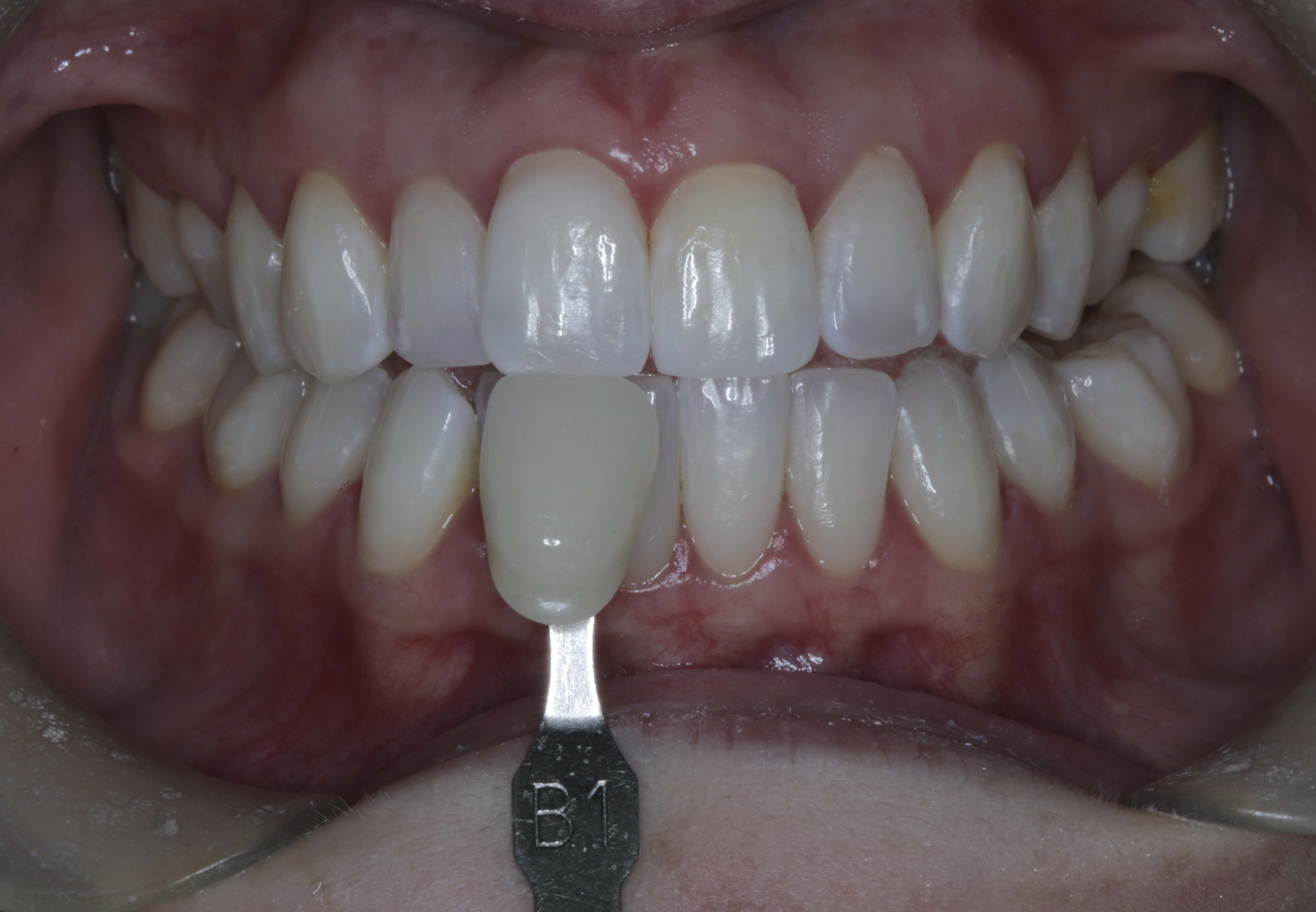
Figure 5. Picture showing a retracted photograph of the post-operative shade. Note we have bleached past VITA shade B1 with Enlighten Tooth Whitening System®.
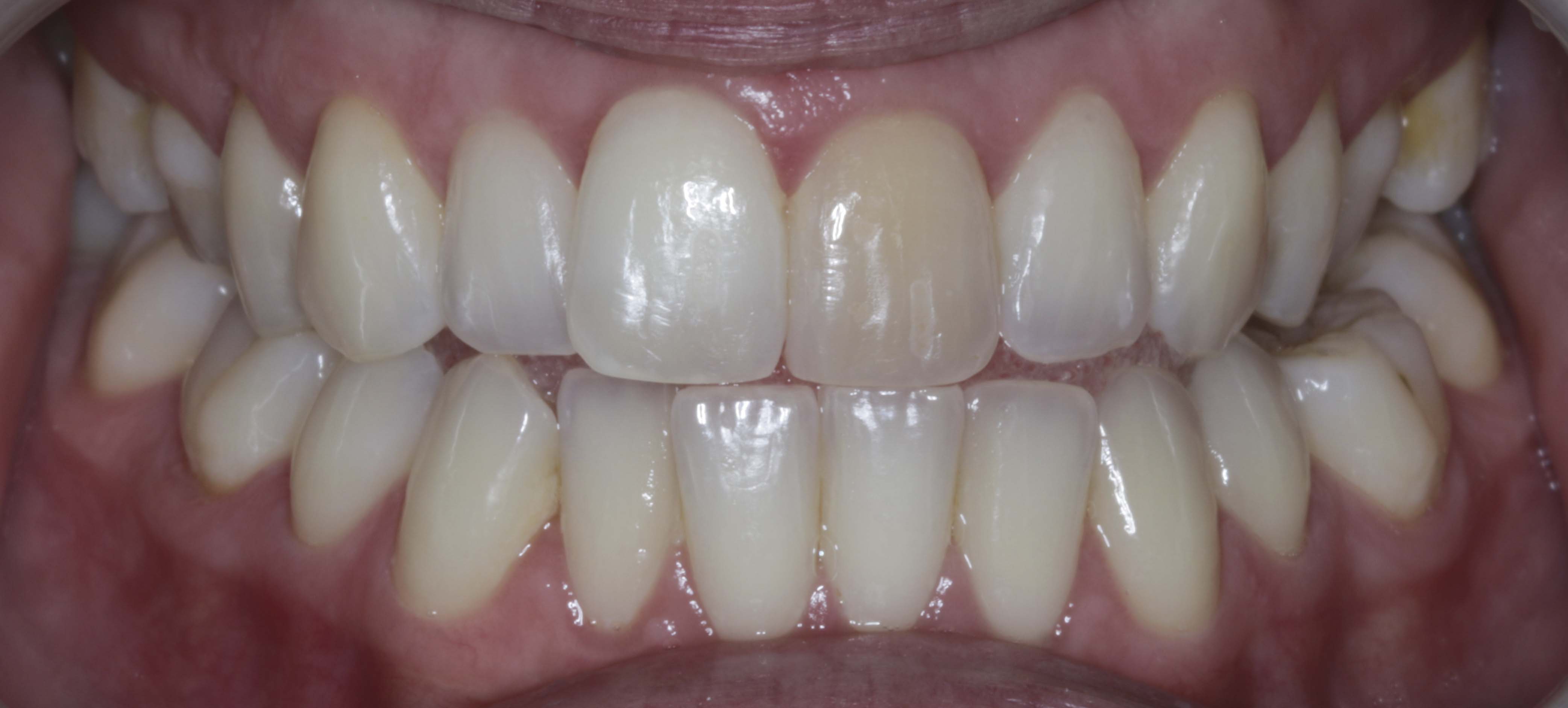
Figure 6. Before treatment with vital bleaching.
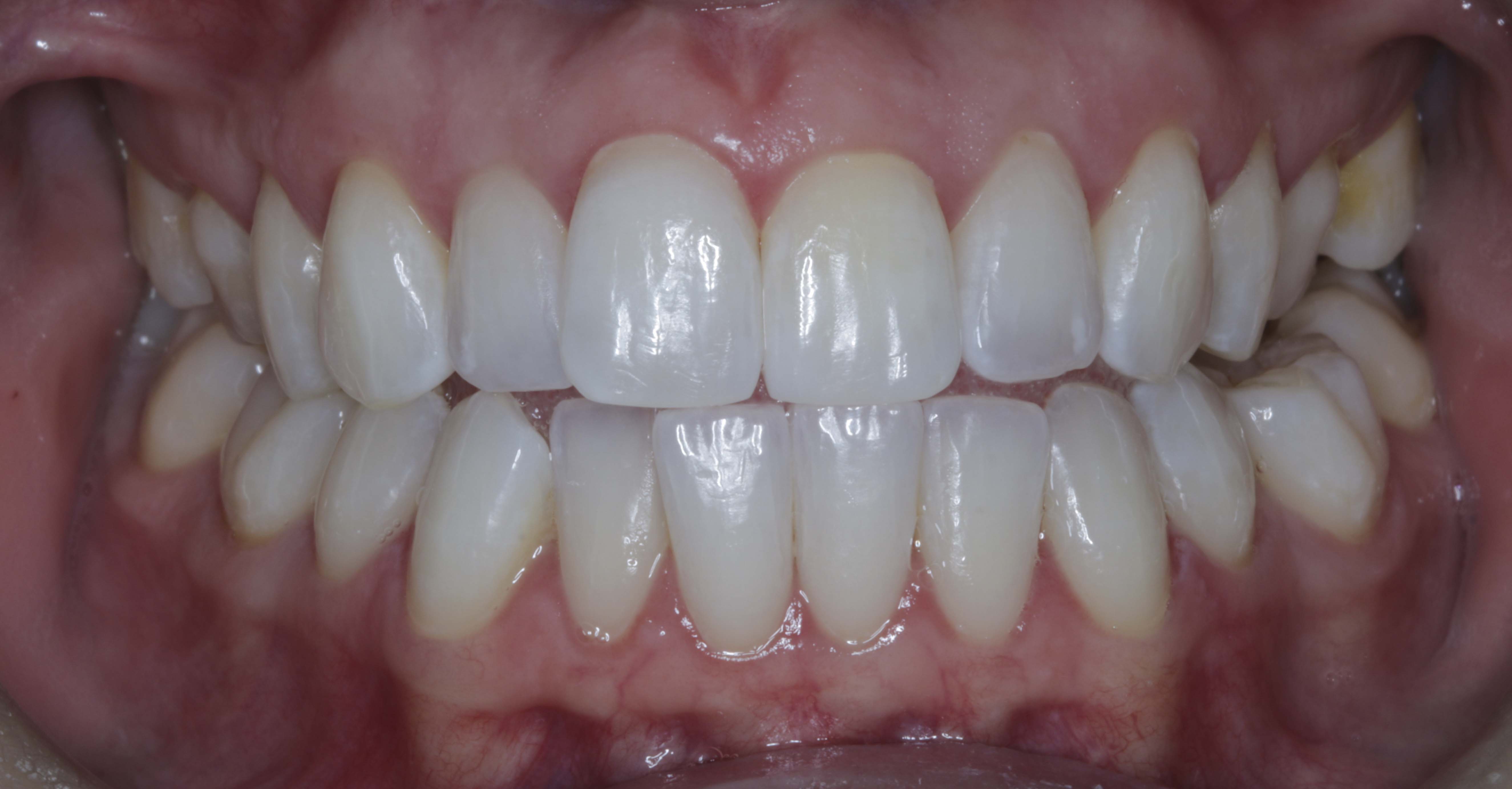
Figure 7. After treatment with vital bleaching.
Risks
As treatment of discoloured teeth is done for cosmetic reasons, it should have more benefits than harmful effects and the consent procedure must be thorough. Although the use of 10-16% carbamide peroxide strives to have the best results with the most minimum amount of side effects, there are still some that occur. The most common risk that occurs with vital tooth bleaching is tooth sensitivity. The patient must be warned about this as it can affect compliance and therefore a dentist should always aim to keep this to a minimum, the use of tooth serum helps this. Gingival irritation is also an issue that is frequently reported and so it is important to ensure that the tray has a good and secure fit, scalloped and free from sharp edges and flashes of resin(5).
Discussion
Vital bleaching is a safe, minimally invasive and cost-effective method for improving the appearance of dark single teeth. Patient assessment and managing expectations is key. Your treatment plan is case dependent and patients must be informed of ongoing maintenance and the costs associated with this.
Bibliography
- McCabe P, Dummer P. Pulp canal obliteration: an endodontic diagnosis and treatment challenge. International Endodontic Journal. 2011;45(2):177-197.
- Barber A, King P. Management of the single discoloured tooth part 1: aetiology, prevention and minimally invasive restorative options. Dental Update. 2014;41(2):98-110.
- Brook A, Smith R, Lath D. The clinical measurement of tooth colour and stain. International Dental Journal. 2007;57(5):324-330.
- Greenwall L. Tooth whitening: the last 25 years [Internet]. Moderndentistrymedia.com. 2018 [cited 7 September 2018]. Available from: http://www.moderndentistrymedia.com/mar_april2016/greenwall.pdf
- Pretty I, Brunton P, Aminian A, Davies R, Ellwood R. Vital Tooth Bleaching in Dental Practice: 3. Biological, Dental and Legal Issues. Dental Update.
› DIG DEEPER ‹

» Training
To become an Enlighten Whitening Expert and get CPD certified for free hit the button below to take our hour-long online training.
» eBooks
Learn how to dramatically increase the number of whitening treatments you do here.
» Websites
Or if you’re interested in knowing more about the Enlighten Teeth Whitening System, then give it a click right here.

» eBooks
Read up on the 6 tips that will perfect your anterior resin restorations here.
And to discover how you can achieve the aesthetic results you want when doing a single veneer with a single shade of composite, click here.
» Websites
If you want to learn more about the 2-day hands-on anterior composite masterclass with Dr Dipesh Parmar, click here.
» Podcast
Learn how to emulate the success of the movers and shakers in the dental industry from their own mouths, featuring the nuggets of knowledge from likes of Simon Chard, Andrew Moore, Tif Qureshi, Mark Hughes and many more.




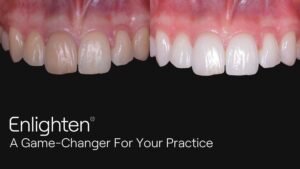
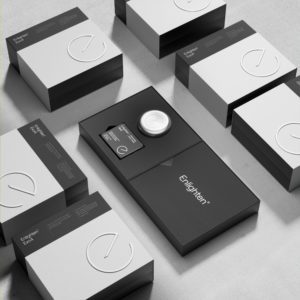


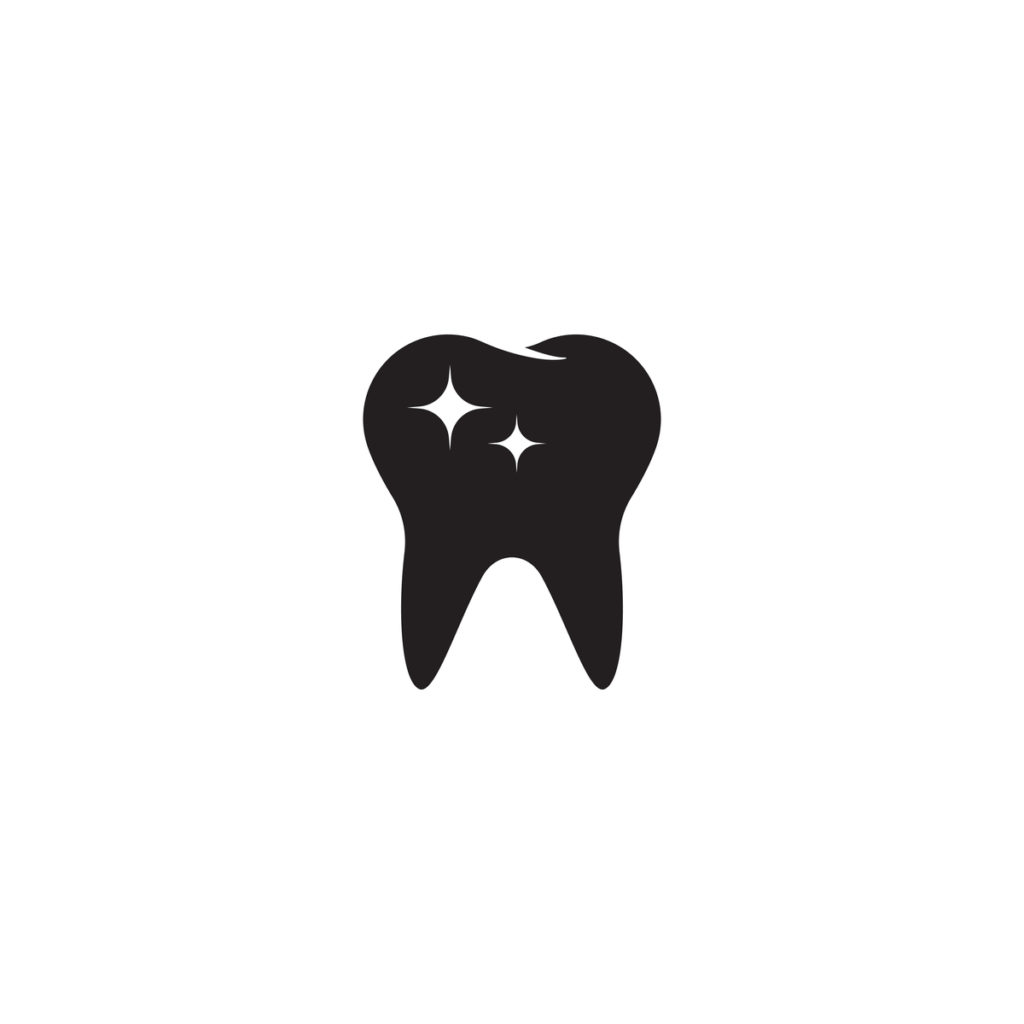






i’ve got a single trauma tooth on the front which i would love to get vital bleaching treatment done on as it is a huge insecurity and i’ve seen the results that you have displayed from another patient
Hello Nimra,
Thank you for contacting us, yes we are able to treat many different cases with Enlighten whitening, however you will need to find a dentist near you that supplies Enlighten in their practice. click on this link https://find.enlightensmiles.com/ and enter your postcode to get a consultation booked in, and the dentist will be able to give you some professional advice on your case.
Hope this helps,
From the Enlighten Team.
Hiii, i have the same issue as the patient. My UL2 Thooth become yellowish since 1.5 years ago. I was told I should do root canal , but I prefer a less invasive treatment first.
How can I find you?
Thank you
Hi Evelyn,
First off, let me apologise for the delay in response.
It depends on a number of factors i.e. health of the tooth/root, shade of the tooth etc. Teeth whitening can work very well in some cases for single dark teeth and we recommend you go to our ‘FIND A DENTIST’ page to find an Enlighten trained dentist in your area (as we are the manufacturers of the product) Here’s the link
Thanks for getting in touch,
Dr Sanjay Patel
Co-founder of Enlighten Smiles.